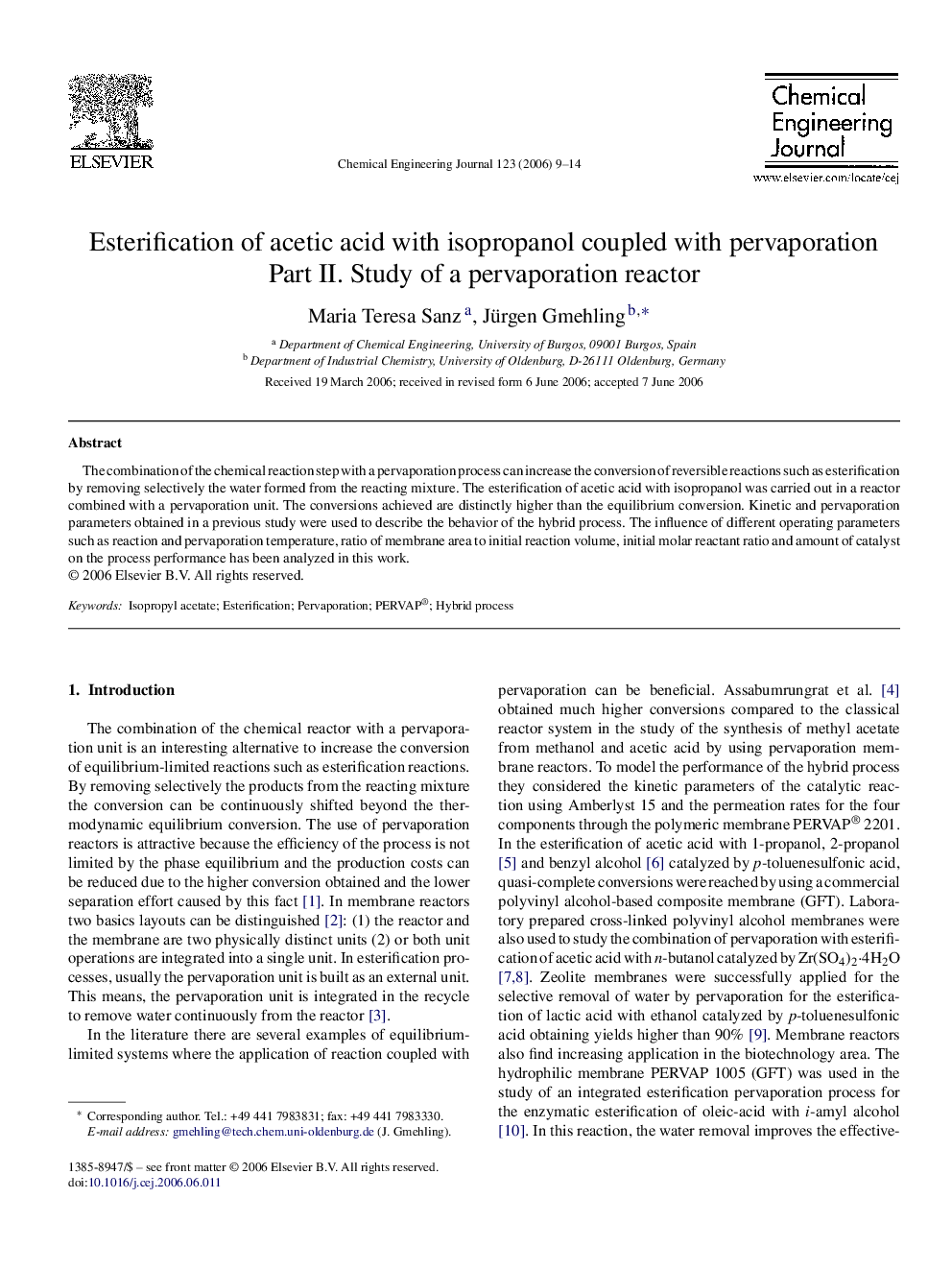| Article ID | Journal | Published Year | Pages | File Type |
|---|---|---|---|---|
| 154215 | Chemical Engineering Journal | 2006 | 6 Pages |
The combination of the chemical reaction step with a pervaporation process can increase the conversion of reversible reactions such as esterification by removing selectively the water formed from the reacting mixture. The esterification of acetic acid with isopropanol was carried out in a reactor combined with a pervaporation unit. The conversions achieved are distinctly higher than the equilibrium conversion. Kinetic and pervaporation parameters obtained in a previous study were used to describe the behavior of the hybrid process. The influence of different operating parameters such as reaction and pervaporation temperature, ratio of membrane area to initial reaction volume, initial molar reactant ratio and amount of catalyst on the process performance has been analyzed in this work.
